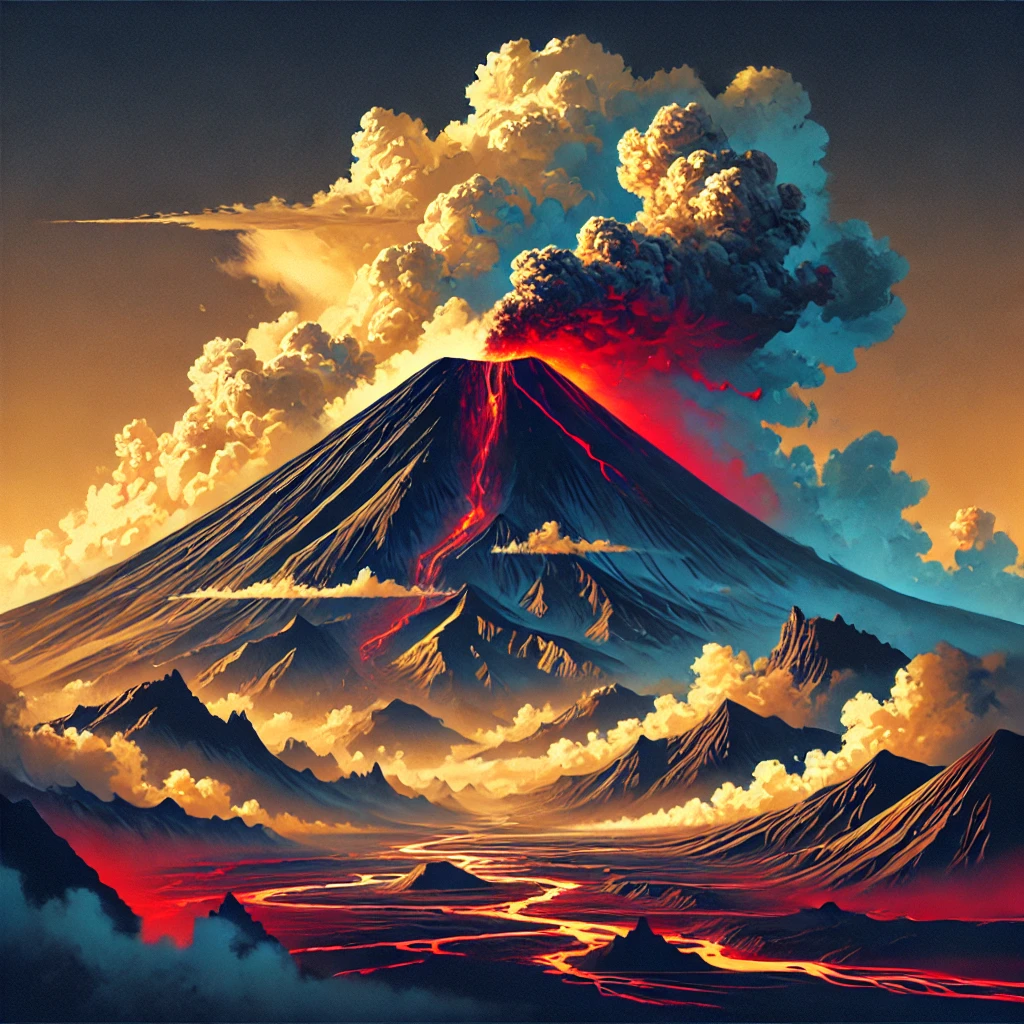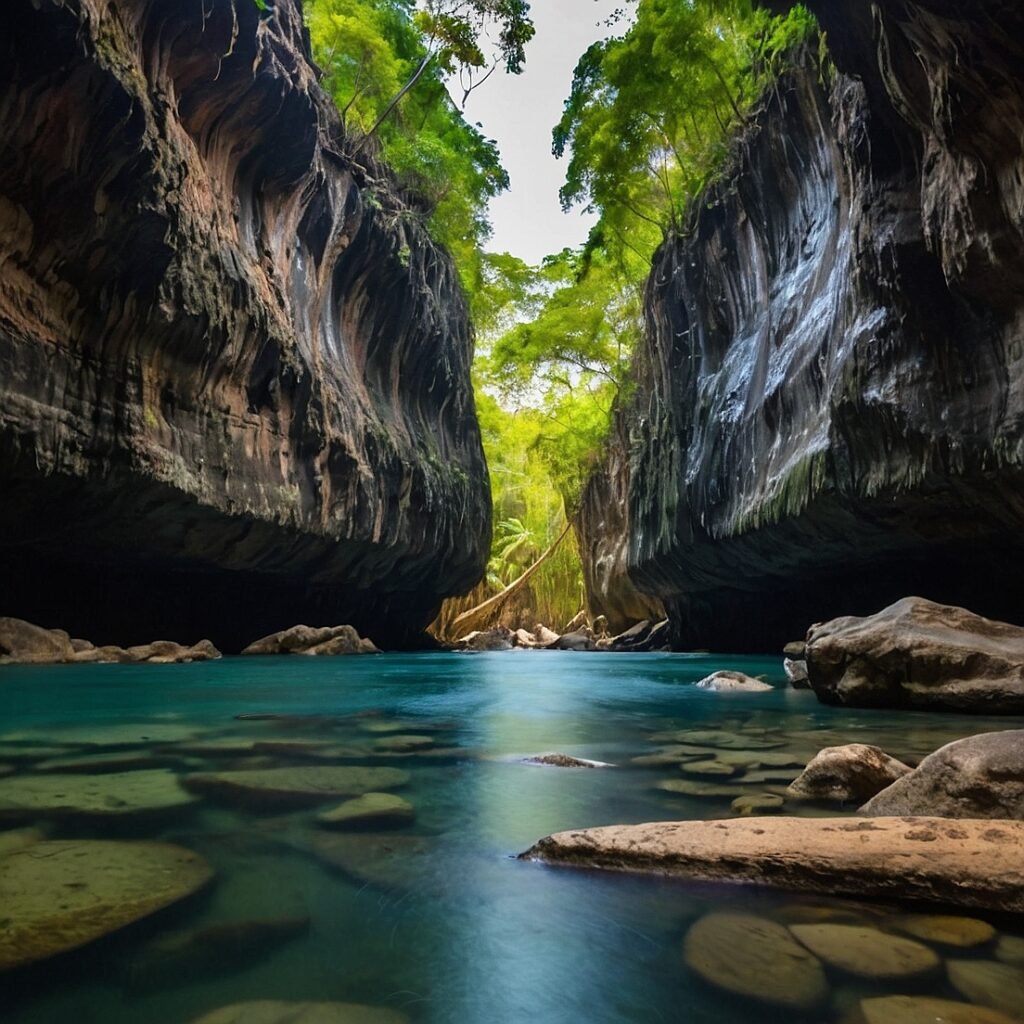Have you ever wondered what it’s like to live in a country where the ground beneath your feet could literally burst into flames at any moment? Welcome to the Philippines, a nation that’s not just known for its stunning beaches and friendly people, but also for its fiery temperament – geologically speaking, of course. Nestled within the infamous Pacific Ring of Fire, the Philippines is home to a staggering number of volcanoes that have shaped its landscape, culture, and even its history. But what exactly is the Ring of Fire, and why does it make the Philippines such a hotbed of volcanic activity? Buckle up, folks, because we’re about to embark on a journey through one of the most geologically active regions on Earth.
The Ring of Fire: Nature’s Volcanic Necklace
What is the Ring of Fire?
Picture this: a massive, horseshoe-shaped belt that stretches for about 40,000 kilometers (25,000 miles) along the Pacific Ocean. This isn’t just any old geological feature – it’s the Ring of Fire, a zone where about 75% of the world’s active volcanoes are found. But that’s not all – this fiery circle is also responsible for about 90% of the world’s earthquakes. Talk about a geological superstar! The Ring of Fire is essentially a series of fault lines and volcanic arcs that outline the Pacific Plate, one of Earth’s major tectonic plates. As these plates collide, separate, and slide past each other, they create the perfect conditions for volcanic eruptions and seismic activity. And right in the heart of this geological dance floor? You guessed it – the Philippines.
Why is the Philippines part of the Ring of Fire?
Now, you might be wondering, “Why is the Philippines smack dab in the middle of all this geological drama?” Well, it’s all about location, location, location. The Philippine archipelago sits on the western edge of the Pacific Ring of Fire, right where several tectonic plates meet. We’re talking about the Philippine Sea Plate, the Eurasian Plate, and the Indo-Australian Plate – all rubbing shoulders (or should we say, edges) in this small corner of the world. This tectonic meetup creates a subduction zone, where one plate dives beneath another, leading to the formation of volcanoes and triggering earthquakes. It’s like nature’s own pressure cooker, constantly building up and releasing energy in spectacular (and sometimes dangerous) ways.
The Philippines: A Volcanic Wonderland
How many volcanoes are there in the Philippines?
If you think the Philippines is just about tropical beaches and lush rainforests, think again. This country is a veritable volcanic theme park! The Philippine Institute of Volcanology and Seismology (PHIVOLCS) has identified a whopping 300 volcanoes scattered across the archipelago. But before you start imagining 300 smoking mountains, let’s break it down a bit. Out of these 300, about 24 are considered active volcanoes – meaning they’ve erupted within the last 10,000 years and could potentially erupt again. The rest are either dormant (sleeping but could wake up) or extinct (haven’t erupted in over 10,000 years and are unlikely to do so again). That’s still a lot of volcanic action for a country roughly the size of Arizona!
The most famous Philippine volcanoes
While all 24 active volcanoes are worth mentioning, some have truly made a name for themselves. Let’s take a quick tour of the Philippines’ volcanic VIPs:
- Mount Mayon: Known as the “Perfect Cone” for its symmetrical shape, Mayon is the poster child of Philippine volcanoes. Located in Albay province, it’s both a tourist attraction and a constant reminder of nature’s power, having erupted over 50 times since 1616.
- Taal Volcano: Don’t let its size fool you – Taal may be one of the world’s smallest active volcanoes, but it’s also one of the deadliest. Situated on an island within a lake within an island, Taal’s complex geology and proximity to Manila make it a closely monitored volcano.
- Mount Pinatubo: This volcano shot to fame (quite literally) with its cataclysmic 1991 eruption, which was the second-largest terrestrial eruption of the 20th century. It affected global climate and dramatically altered the surrounding landscape.
- Mount Apo: While not as active as its fiery cousins, Mount Apo holds the title of the highest peak in the Philippines. It’s a favorite among hikers and nature enthusiasts, offering breathtaking views and diverse ecosystems.
These volcanoes, along with many others, have played crucial roles in shaping not just the physical landscape of the Philippines, but also its culture, history, and even its economy. They’re not just geological features – they’re an integral part of the Filipino identity.
Living on the Edge: Life in a Volcanic Landscape
The benefits of volcanic activity
Now, you might be thinking, “Living near a volcano? No thanks!” But hold on – there’s more to this story than just danger and destruction. Volcanic activity has actually brought some significant benefits to the Philippines. For starters, let’s talk about soil. Volcanic ash is incredibly rich in minerals, making the land around volcanoes extremely fertile. This has led to thriving agricultural communities in many volcanic regions of the Philippines. The country’s lush forests, bountiful crops, and even its world-famous Barako coffee owe much of their existence to volcanic soil.
But the benefits don’t stop at agriculture. The geothermal energy produced by these volcanoes is a major source of renewable power in the Philippines. In fact, the country is the world’s third-largest producer of geothermal energy, right behind the United States and Indonesia. This clean, sustainable energy source helps reduce the Philippines’ dependence on fossil fuels and contributes to its efforts to combat climate change. And let’s not forget about tourism – these majestic mountains, with their perfect cones and stunning crater lakes, draw visitors from all over the world, boosting local economies and putting the Philippines on the global tourism map.
The challenges of volcanic living
Of course, it’s not all roses and geothermal power plants. Living in the shadow of an active volcano comes with its fair share of challenges and risks. Volcanic eruptions can be devastating, causing loss of life, destruction of property, and long-term displacement of communities. The 1991 eruption of Mount Pinatubo, for instance, forced the evacuation of over 200,000 people and caused billions of dollars in damage. Even when volcanoes aren’t erupting, they can pose health risks through the emission of toxic gases and ash.
Moreover, the constant threat of eruption means that communities near active volcanoes must always be prepared for potential disasters. This involves regular drills, maintaining evacuation routes, and sometimes even relocating entire towns. It’s a delicate balance between harnessing the benefits of volcanic landscapes and respecting the immense power of these geological giants. The Philippine government, through agencies like PHIVOLCS, works tirelessly to monitor volcanic activity, improve early warning systems, and educate the public about volcanic hazards. It’s a never-ending task, but one that’s crucial for the safety and well-being of millions of Filipinos.
Volcanic Legends and Lore
Volcanoes in Filipino mythology
In a land where fiery mountains dominate the skyline, it’s no surprise that volcanoes feature prominently in Filipino folklore and mythology. These stories aren’t just entertaining tales – they reflect the deep connection between the Filipino people and their volcanic environment. Take, for example, the legend of Panganoron and Magayon, which explains the origin of Mount Mayon. According to the story, Magayon was a beautiful maiden who fell in love with Panganoron. However, a jealous suitor named Pagtuga tried to separate them. In the ensuing battle, both Magayon and Panganoron died. The gods, moved by their tragic love, transformed them into Mount Mayon – with Magayon’s perfect form becoming the volcano’s cone, and Panganoron’s grief manifesting as the clouds that often shroud its peak.
Another fascinating myth surrounds Taal Volcano. Some local legends say that Taal Lake, which surrounds the volcano, was formed when a powerful creature called Bernardo Carpio stamped his foot in anger, creating a massive depression that filled with water. These stories do more than just entertain – they help people make sense of their environment and foster a sense of reverence for these powerful natural features. They’re a testament to the profound impact volcanoes have had on Filipino culture and consciousness.
Modern volcano worship and traditions
While many of these myths have faded into folklore, the reverence for volcanoes remains strong in many Filipino communities. Some indigenous groups still consider certain volcanoes to be sacred sites, performing rituals and offerings to appease the spirits they believe dwell within. In other areas, Catholic traditions have blended with older beliefs, resulting in unique practices like the Feast of Our Lady of Peñafrancia in Bicol, where devotees pray for protection from volcanic eruptions.
Even in more urban areas, volcanoes continue to shape local culture and traditions. Festivals celebrating the beauty and bounty of volcanic regions are common, often featuring products made from volcanic soil or showcasing the unique landscapes created by past eruptions. These celebrations serve as a reminder of the dual nature of volcanoes – their potential for destruction, but also their role in creating and sustaining life. It’s a complex relationship, one that’s deeply woven into the fabric of Filipino society.
Volcanoes and Science: Philippines at the Forefront
PHIVOLCS and volcanic monitoring
When it comes to living with volcanoes, knowledge is power – and in the Philippines, that knowledge comes largely from PHIVOLCS. The Philippine Institute of Volcanology and Seismology is at the forefront of volcanic research and monitoring in the country. These scientists are the unsung heroes of the Philippines’ volcanic landscape, working tirelessly to keep the public safe and informed. PHIVOLCS operates a network of observatories and monitoring stations across the country, keeping a watchful eye on the nation’s active volcanoes 24/7.
But how exactly do they monitor these fiery giants? It’s not just about watching for smoke and lava (although that’s part of it). PHIVOLCS uses a combination of high-tech equipment and good old-fashioned field observations. Seismographs detect earth tremors that might signal an impending eruption. Gas analyzers measure the types and amounts of gases being emitted by a volcano, which can change before an eruption. Satellite imagery and GPS systems track subtle changes in a volcano’s shape that might indicate building pressure. All this data is analyzed in real-time, allowing scientists to predict eruptions and issue warnings when necessary.
Contributions to global volcanology
The Philippines’ unique geological setting hasn’t just made it a hotspot for volcanic activity – it’s also made the country a valuable contributor to the field of volcanology as a whole. Filipino scientists, working in collaboration with international researchers, have made significant contributions to our understanding of volcanic processes and hazards. The lessons learned from major eruptions like Pinatubo in 1991 have informed volcanic risk management strategies around the world.
Moreover, the Philippines serves as a natural laboratory for studying a wide variety of volcanic phenomena. From the perfectly shaped stratovolcano of Mayon to the complex caldera system of Taal, the country offers a diverse range of volcanic types and behaviors. This diversity has allowed researchers to study everything from eruption dynamics to the long-term impacts of volcanic activity on climate and ecosystems. The knowledge gained from these studies doesn’t just benefit the Philippines – it contributes to global efforts to better understand and prepare for volcanic hazards worldwide.
The Future of Philippine Volcanoes
Climate change and volcanic activity
As we look to the future, one question looms large: How will climate change affect the Philippines’ volcanoes? While the relationship between climate change and volcanic activity is complex and not fully understood, there are concerns that global warming could potentially increase volcanic activity in some areas. Changes in ice cover and sea level, for instance, could alter the pressure on magma chambers, potentially triggering eruptions. Additionally, more intense rainfall events due to climate change could increase the risk of lahars – destructive mudflows made of volcanic materials and water.
On the flip side, major volcanic eruptions can also influence global climate. Large eruptions inject massive amounts of ash and gases into the atmosphere, which can have a cooling effect on the Earth’s surface. The 1991 Pinatubo eruption, for example, lowered global temperatures by about 0.5°C for over a year. As we grapple with the challenges of climate change, understanding these volcanic-climate interactions becomes increasingly important.
Preparing for future eruptions
Given the Philippines’ location in the Ring of Fire, future volcanic eruptions are not a matter of if, but when. So how is the country preparing for this fiery future? For one, there’s a strong focus on improving early warning systems and evacuation procedures. PHIVOLCS continues to upgrade its monitoring capabilities, incorporating new technologies like drones and AI-powered data analysis to better predict eruptions.
Education also plays a crucial role. From school curricula to community workshops, efforts are being made to ensure that Filipinos understand the risks associated with living near volcanoes and know how to respond in case of an eruption. There’s also increasing emphasis on building resilience – designing infrastructure that can withstand ash fall, for instance, or developing agriculture practices that can quickly recover from volcanic disturbances.
But perhaps the most important aspect of preparation is maintaining a balance between development and respect for these powerful natural features. As the Philippines continues to grow and urbanize, there’s a need to carefully manage development in volcanic areas, ensuring that the benefits of volcanic landscapes are harnessed sustainably while minimizing risks to communities.
Conclusion
The Philippines’ relationship with its volcanoes is a complex tapestry of danger and opportunity, fear and reverence, science and mythology. These fiery mountains have shaped the country’s landscape, influenced its culture, and continue to play a crucial role in its development. From the fertile soils that nourish crops to the geothermal energy powering homes, from the myths that enrich cultural identity to the scientific discoveries that benefit the world – volcanoes are an integral part of what makes the Philippines unique.
Living in the Ring of Fire certainly comes with its challenges, but it has also fostered a resilience and adaptability in the Filipino people that’s truly inspiring. As we look to the future, the key lies in continuing to respect and understand these powerful forces of nature. By embracing the fire within – both literally in terms of the country’s volcanic nature, and metaphorically in the spirit of resilience and innovation – the Philippines can turn its geological challenges into opportunities for sustainable growth and development.
So the next time you hear about a Philippine volcano in the news, remember – it’s not just a potential natural disaster. It’s a window into the dynamic, ever-changing nature of our planet, a testament to human resilience, and a crucial part of what makes the Philippines the vibrant, diverse, and endlessly fascinating country that it is. After all, in the Philippines, life isn’t just about waiting for the storm to pass – it’s about learning to dance in the rain… or in this case, the ash.
Disclaimer: This blog post is intended for informational purposes only. While we strive for accuracy, volcanic activity is unpredictable and conditions can change rapidly. Always refer to official sources like PHIVOLCS for the most up-to-date information on volcanic activity and safety guidelines. If you notice any inaccuracies in this post, please report them so we can correct them promptly.




